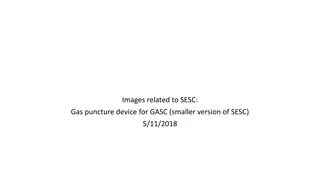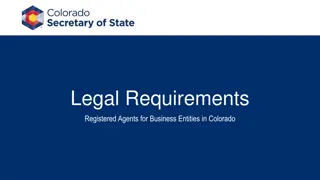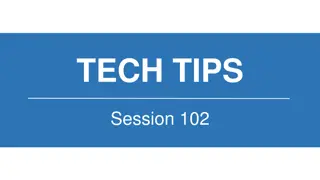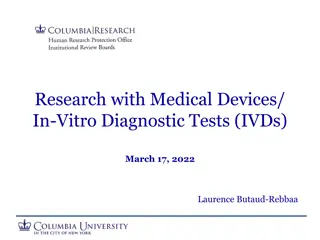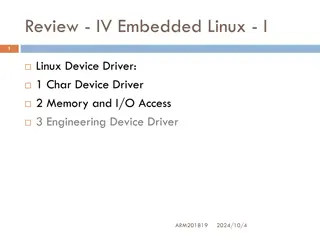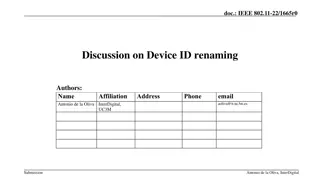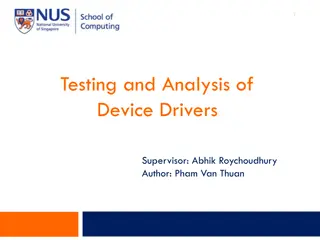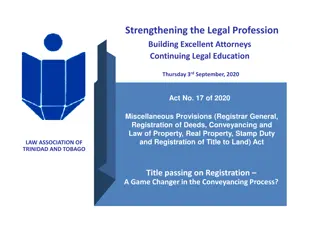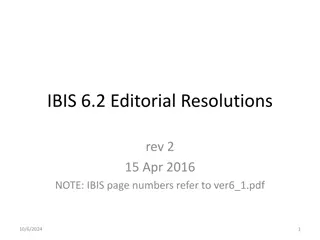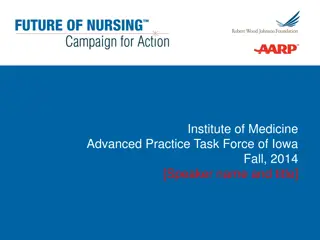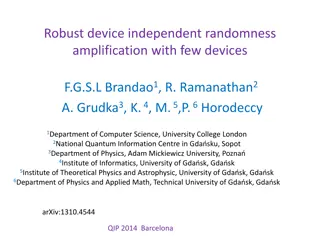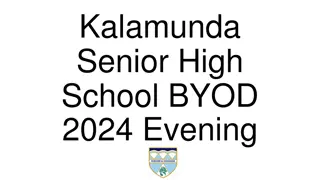Device Usage and Non-Registered Students Analysis Summary
The presentation discusses the outcomes of a device usage survey among students of different races/ethnicities. It includes data on the types of devices students use, most preferred devices, and internet access locations. Additionally, the analysis of non-registered students and their registration patterns is explored, along with potential revenue implications.
Download Presentation

Please find below an Image/Link to download the presentation.
The content on the website is provided AS IS for your information and personal use only. It may not be sold, licensed, or shared on other websites without obtaining consent from the author. Download presentation by click this link. If you encounter any issues during the download, it is possible that the publisher has removed the file from their server.
E N D
Presentation Transcript
Presentation to: All Administrators and Supervisors Device Usage Survey Outcomes and Non-Registered Students Analysis Office of Institutional Research & Planning February 10, 2017
What devices do students use? Totals By Race/Ethnicity 80% 74% 77% 77% 70% 73% 73% 72% 70% 60% 54% 53% 50% 48% 47% 50% 40% 34% 31% 29% 27% 26% 26% 40% 21% 18% 17% 17% 16% 12% 27% 11% 30% 20% 15% African American (N=1,864) Asian Filipino (N=2,712) Latino/a (N=10,819) White (N=9,522) Declined (N=1,039) (N=14,083) 10% 1% 0% Laptop Desktop Smartphone Tablet Laptop Desktop computer Smartphone Tablet None of the above
What devices do students use most often? Totals By Race/Ethnicity 60% 60% 55% 51% 49% 48% 50% 46% 44% 39% 38% 36% 40% 33% 28% 24% 30% 22% 14% 20% 13% 10% 10% 9% 8% 11% 4% 3% 3% 3% 2% 2% 10% 3% African American (N=1,447) Asian Filipino (N=2,158) Latino/a (N=8,612) White (N=7,787) Decline (N=813) 0% (N=10,729) 0% Laptop Desktop computer Smartphone Tablet None of the above Laptop Desktop Smartphone Tablet
Where do you most often access the Internet? 77% 80% 70% 60% 50% 40% 30% 20% 13% 10% 3% 3% 2% 0% Home School Work Other Decline
Who didnt register/stay? Part I Intended Registrants 43,675 Non- enrollees 3,051 Enrollees 40,624 Fall '16 enrollees 33,258 Fall '16 Non- enrollees* 7,366 * Not enrolled in a credit course in the district at census
Who didnt register/stay? Part II Fall '16 Non- enrollees 7,366 Non- Shoppers 4,152 Shoppers 3,214 Non-Shoppers II 3,997 Other Enrollees 155 Attempters 3,885
Possible Revenue Implications Table 1 Potential revenue for Shoppers (N=3,214) FTES 803.5 1,607 3,214 Dollar Amounts ($) $4,017,500 $8,035,000 $16,070,000 3 Units 6 Units 12 Units Table 2 Potential revenue for Attempters (N=3,885) FTES 971.25 1,942.5 3,885 Dollar Amounts ($) $4,856,250 $9,712,500 $19,425,000 3 Units 6 Units 12 Units Table 3 Potential revenue for 10% of all 10,105 FTES 253.75 507.5 1,015 Dollar Amounts ($) $1,268,750 $2,537,500 $5,075,000 3 Units 6 Units 12 Units
When did we last see the student? (Attempters N = 3,885) 300 Top subject areas with dropped courses August 24, 271 Non-payment drops 250 Mathematics Computer Science/Info. Systems 200 English 150 September 25, 117 Web drops 100 September 26, 89 Drops with refunds 50 0 Web Dropped Drop - Nonpayment Drop with refund Note: The first day of classes was 9/26/16 and census day was 10/10/16
What do we know about these students? (Shoppers + Attempters = 7,099) Race/Ethnicity Very similar to district Gender Slight over-representation of females compared to district Nearly 75% were here within the past year Summer 2016 Spring 2016 Winter 2016 Fall 2015 Income 32% Low income 48% applied for financial aid
Conclusions Additional Research General thoughts Did students enroll after Fall 2016? Did somebody take their place in the dropped class? Are these outcomes similar across time? Why did non-enrollees and shoppers not register for any course? Why did attempters not stay? No group(s) of individuals seem to be disproportionately impacted. Many of these individuals were with us recently. 10,000 is a big number.
Thank You Questions?





